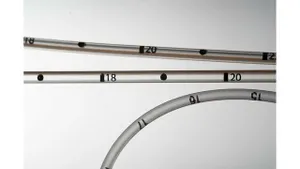It's never too late to upgrade controls
September 20, 1998
Custom molder Riverside Plastics in Bonaparte, IA is a believer. Among its 25 machines (up to 450 tons), Riverside was running an older-vintage 220-ton New Britain with its original older-vintage controller. The New Britain press seemed to be giving up the ghost . . . short shots, flashing, warp, surface defects, you name it. Its scrap rate was 20 percent. Setups were a time-consuming nightmare, as were process diagnostics. But, mechanically speaking, the press itself was a proven workhorse with an excellent track record.
You know the type-those presses that are tough to say goodbye to. Management considered buying a new press, but questioned whether scrapping a functionally sound machine was really worth the cost of a new one. The company settled on upgrading the controller instead. Marvin Messer, Riverside's maintenance supervisor, along with everyone else at the plant, is glad it did.
It used to take as long as 4 hours just to locate the source of a problem with the original controller. This generally involved calling in a tech service rep, even for what turned out to be simple problems. One signal would usually go through six or seven circuit boards, so each one of the boards had to be checked. And more often than not, new boards would have to be ordered and Messer and company generally would have to wait several days for the boards to arrive. Setups were a pain, too. They used to involve thumbwheels and limit switches and trial and error, and usually took at least 2 hours each time around. Who's got that kind of time?
Riverside bought Solid Control Inc.'s (SCI-Hopkins, MN) Trailblazer 10-T. When it's powered up, the controller automatically checks itself and key machine functions. If it spots a fault, the controller issues a problem-location code and highlights the problem area on a graphic display of the press. It takes only a few minutes.
Since installation, the controllers themselves have never been down for unscheduled maintenance. And setups? Parameters can be keystroked in from setup sheets. There's still a bit of trial and error involved to get everything running right, but the whole process takes only an hour or less. And setups have to be keyed in only once. The controller remembers the molds.
But by far the biggest benefit has been in improved consistency and quality. The scrap rate has been cut in half. The new controller closely monitors all molding variables, and it automatically compensates for temperature and pressure variations by modifying injection pressure to maintain a constant velocity profile.
It's been programmed to stop the machine if it spots a critical deviation from the injection profiles. And it can maintain screw travel to within hundredths of an inch, eliminating any chance of overpacking or short shots-and any subsequent mold damage, for that matter.
Clamping accuracy also has been improved to the hundredths of an inch range, so low-pressure closing can now be accurately set. With scrap, downtime, and setup times reduced, Riverside Plastics could pocket the savings. And thanks to the new controls, it wasn't too late to keep a good old press on board.
You May Also Like


